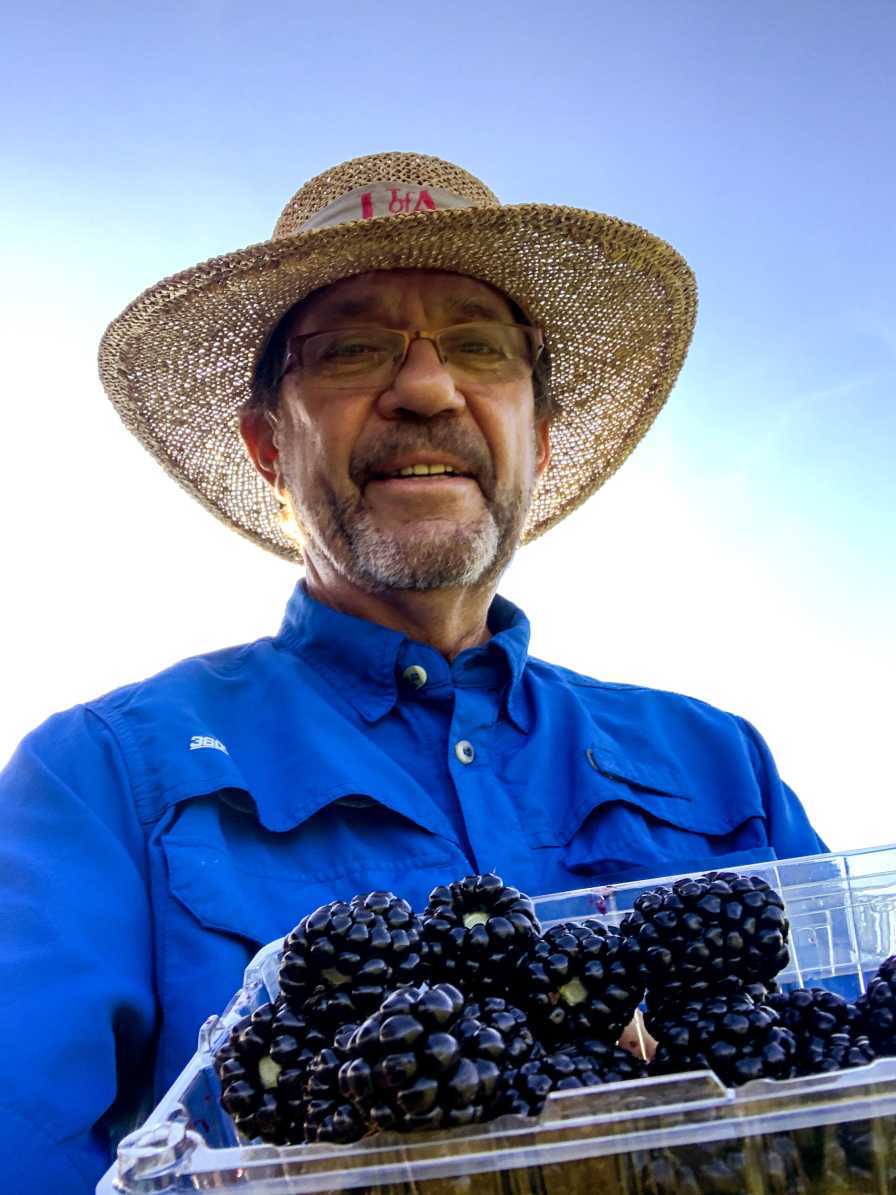In High Praise of Cooperative Plant Breeding Efforts for Berries
In my previous column, I introduced the idea of “pocket breeding” and discussed some history in germplasm development in berry programs. The term “pocket breeding” targeted the attaining of breeding germplasm through methods such as simply taking plants from a source that might not be allowed or legal, or rather a proprietary source.
Now, with the increasing presence of private programs in our berry industries, the entire area of genetic diversity in breeding germplasm is becoming increasingly important.
USE OF RELEASED VARIETIES AS PARENTS
Most breeders agree that a publicly available variety, even if protected by a plant patent or plant breeder’s rights, can be used in crossing by breeders beyond the originating program. The key here is “publicly available,” in that the plant used in crossing has to be available in the open market. This means the variety can be legally attained and the plant parts can be used in breeding, much like one buys berries and uses them for food.
Many of our privately bred berry varieties are not available in the public market, so it is not legal to use them in breeding. These varieties are kept within a company’s growers and not “sold” in the public market. These varieties might be good candidates for pocket breeding.
FRUIT AS GERMPLASM
Many years ago, I was shown a family of plants derived from germinating seeds of a very successful raspberry variety. The seeds had been extracted from fruit bought in a public market, the germplasm legally attained in the seeds.
I had always been taught that caneberry plants (raspberries and blackberries) suffer substantially from inbreeding depression, which results from crossing closely related parents, or self-pollinating a variety. In theory, the seeds that were extracted from the fruit resulted from “selfs” since the variety was likely planted in a solid block of plants with no “foreign” pollen source.
I was impressed with plants in this family or population of seedlings. There looked to be some seedlings as good as the parent variety, although many were not. That is how all populations appear, however, in that most seedlings are inferior to the parents and have no value.
This was an eye-opening experience for me, and since then there have been reports of many varieties of berries originating simply from seeds extracted from legally attained berries. However, the “diversity” of genetics in seed-extracted offspring is surely reduced compared to seedlings resulting from diverse parents. This likely limits the value of varieties attained this way for future breeding improvement.

Pictured here is David Cain the founder of International Fruit Genetics (IFG) and me, viewing cooperative plant breeding that led to ‘Cotton Candy’ grape.
Photo by David Karp
CONCERNS WITH DIVERSITY IN GERMPLASM
Breeding programs can experience limitations over time with the reduction in diversity in their breeding germplasm. Diversity is important for further trait improvement and to reduce the degree of inbreeding that can result in reduced quality, vigor, and productivity in seedlings.
As breeding programs have become more restrictive in sharing germplasm, this poses a potential threat to new variety development. This can be addressed in a couple of ways.
One way I increased diversity in private programs was by sharing breeding selections from the University of Arkansas. This was done in an agreement where germplasm was provided for a fee. This is how the ‘Cotton Candy’ grape originated, with flavor diversity in a University of Arkansas (UA) selection combined with another parent by International Fruit Genetics in California.
This novel approach resulted in one of our more distinctive, super-sweet fruit varieties on the market now. This same approach can be taken by other programs, be they private or public. Both programs gained from this exchange. For UA, subsequent income from breeding cooperation has allowed a continuation of the fruit breeding effort in a state with no industry support.
The role of public programs has continuing potential in germplasm development, often for certain traits like disease resistance. Germplasm development often uses less improved diversity (including wild plants) and can take years to attain variety-level with the improved trait (again such as disease resistance).
DIVERSITY WITHOUT THE ‘POCKET’
Cooperative breeding has great potential for increasing diversity in our berry breeding programs, just as it had many years ago as practiced by public breeders. And since almost all varieties are patented or otherwise protected, the cooperative breeding programs both benefit from variety use in royalties or other proprietary income.
This is a path of success to ensure adequate diversity continues to exist in our breeding efforts while allowing an “above-board” path to sharing of germplasm, be it among or between both private and public programs. No pockets involved!
Let the berry good times roll!










